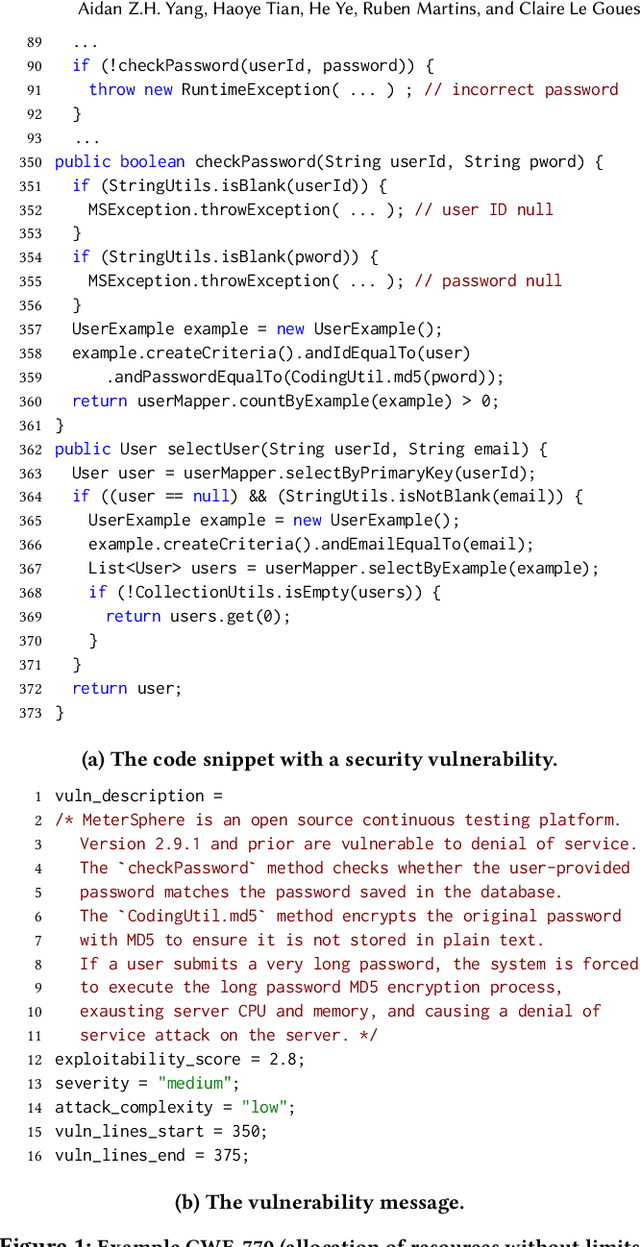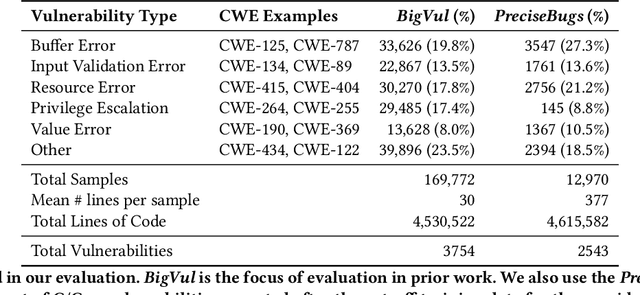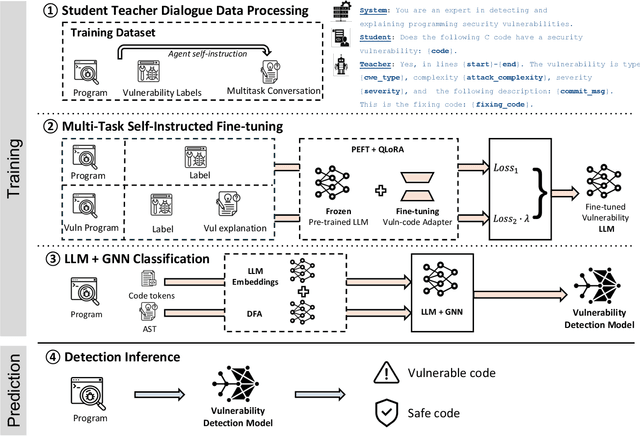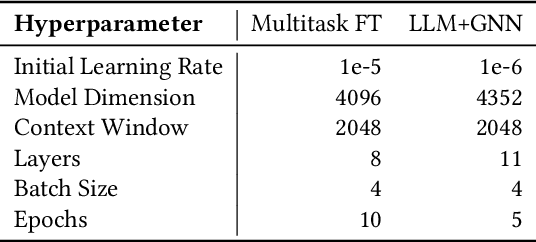Security Vulnerability Detection with Multitask Self-Instructed Fine-Tuning of Large Language Models
Paper and Code
Jun 09, 2024



Software security vulnerabilities allow attackers to perform malicious activities to disrupt software operations. Recent Transformer-based language models have significantly advanced vulnerability detection, surpassing the capabilities of static analysis based deep learning models. However, language models trained solely on code tokens do not capture either the explanation of vulnerability type or the data flow structure information of code, both of which are crucial for vulnerability detection. We propose a novel technique that integrates a multitask sequence-to-sequence LLM with pro-gram control flow graphs encoded as a graph neural network to achieve sequence-to-classification vulnerability detection. We introduce MSIVD, multitask self-instructed fine-tuning for vulnerability detection, inspired by chain-of-thought prompting and LLM self-instruction. Our experiments demonstrate that MSIVD achieves superior performance, outperforming the highest LLM-based vulnerability detector baseline (LineVul), with a F1 score of 0.92 on the BigVul dataset, and 0.48 on the PreciseBugs dataset. By training LLMs and GNNs simultaneously using a combination of code and explanatory metrics of a vulnerable program, MSIVD represents a promising direction for advancing LLM-based vulnerability detection that generalizes to unseen data. Based on our findings, we further discuss the necessity for new labelled security vulnerability datasets, as recent LLMs have seen or memorized prior datasets' held-out evaluation data.
 Add to Chrome
Add to Chrome Add to Firefox
Add to Firefox Add to Edge
Add to Edge